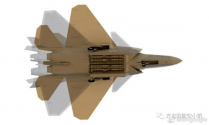it means FxxK 35 in chineseI don't know why they choose the name J-35, why not J-40 or something. This name looks similar to the F-35.
You are using an out of date browser. It may not display this or other websites correctly.
You should upgrade or use an alternative browser.
You should upgrade or use an alternative browser.
J-35 carrier fighter (PLAN) thread
- Thread starter Deino
- Start date
I don't know why they choose the name J-35, why not J-40 or something. This name looks similar to the F-35.
We don't know its real designation yet.
In fact we only know some rumours but actually I have more the feeling, J-35 is more a number used to mock the US-fan-boys since it would mimic their own F-35 or it is based as on a combination of J-15 (naval fighter) meets J-20 (stealth capabilities) and so 15+20 = 35!
In reality I expect a designation within the J-2Xs range - maybe indeed J-21 for the carrier version and J-22 - another mock against the F-22 - for the PLAAF version, if there will ever be one. And only the 6th generation fighter will have a J-30-number to denote the next generation.
歼 = liquidation/exterminate.it means FxxK 35 in chinese
No. J is for 歼. It means to eliminate, wipe out. 歼击机 is fighter jet. Only those trying to insult China will purposely use another word with the same pronunciation, 奸, it means Fxxx. It has negative meaning in chinese.it means FxxK 35 in chinese
J-XY is significantly smaller than J-20, but J-20's weapons bay is also relatively small dimension-wise, to its overall size (compared to say, the dimensions of F-22's weapons bay to its fuselage size, or the dimensions of F-35's weapons bay to its fuselage size).
In the case of J-XY, I am awaiting pictures to see if the rumour is true, but I think it is a possibility.

a tad shorter? yes...smaller? nope
Who scaled that image and on what basis did they use to scale it?
Oh come on, this is never to scale
Yes, when people say significantly smaller, they think of the difference in the size of the engines. In fact, carrier based aircraft have different requirements. What it will probably mean is that J-35 will have slower top speed or flight ceiling, but that is the same trade-off that F-35 made versus F-22. Especially for a naval variant, it is an acceptable trade-off.
That's not carrier aircraft in general. That's this aircraft in particular. J-15 is decently fast(dash-capable), for example. M=2.35 is quite a lot.In fact, carrier based aircraft have different requirements.
Also, we don't know much about where J-XY stands, and probably won't know for quite a while - treats like a well-known F-35 acceleration table are almost impossible for an in-development domsetic Chinese a/c.
While true, as of now, J-XY(FC-31) seems to be much less strike-biased than the F-35 family.What it will probably mean is that J-35 will have slower top speed or flight ceiling, but that is the same trade-off that F-35 made versus F-22.
In a way, there is a good chance it (unlike the F-35C, which is going to be a niche aircraft onboard US carriers!) will be positioned as the mainstay of the fleet.
Last edited:
Agreed. Different countries have different requirements for their hardware. For China, if they were to strike, it would, in the next couple of decades, be in response to foreign aggression primarily from the U.S. This means Japan, Guam or Australia. Japan is close enough that they have many other ways to bomb without needing a carrier. For Australia or Guam, the carrier groups will likely not survive a fight with the U.S. carrier groups. So the missions for the carriers, as far as fighting peer power is concerned, will be primarily about contest of East China Sea and South China Sea. Carriers will extend the reach of the Chinese power projection further out in these two seas, so the missions for this plane is probably to hit the AWACS and tankers as well as to pinpoint the American carrier location and to guide the incoming missiles, increasing the effective range of the DF-21 and such. If China were to fight smaller powers up to and including India, stealth fighter is nice but they will deploy more J-15 along the way.That's not carrier aircraft in general. That's this aircraft in particular. J-15 is decently fast(dash-capable), for example. M=2.35 is quite a lot.
Also, we don't know much about where J-XY stands, and probably won't know for quite a while - treats like a well-known F-35 acceleration table are almost impossible for an in-development domsetic Chinese a/c.
While true, as of now, J-XY(FC-31) seems to be much less strike-biased than the F-35 family.
In a way, there is a good chance it (unlike the F-35C, which is going to be a niche aircraft onboard US carriers!) will be positioned as the mainstay of the fleet.
